Once in a while it is worth taking a break and just looking at the world around us. (All the better if it is through the cockpit of a jetliner. :-)
Having had the chance to witness such beauty around the Pacific, I can attest that thunderstorms at night in the tropics compete with auroras at the Poles for a magic show of pure beauty and colors. Likewise, flying low over coral reefs surrounding atolls gives us a multi-color view of the largest mega-organisms on Earth. Add a frequent rainbow after the rain or a lava trail in Hawaii, Vanuatu or New Britain and it is easy to understand why so many people believe that the Earth is alive.
Authored by Deborah George via The Epoch Times (emphasis ours),
From 40,000 feet high, storm pilot photographer Santiago Borja captures a series of breathtaking images of the most intense of storms.
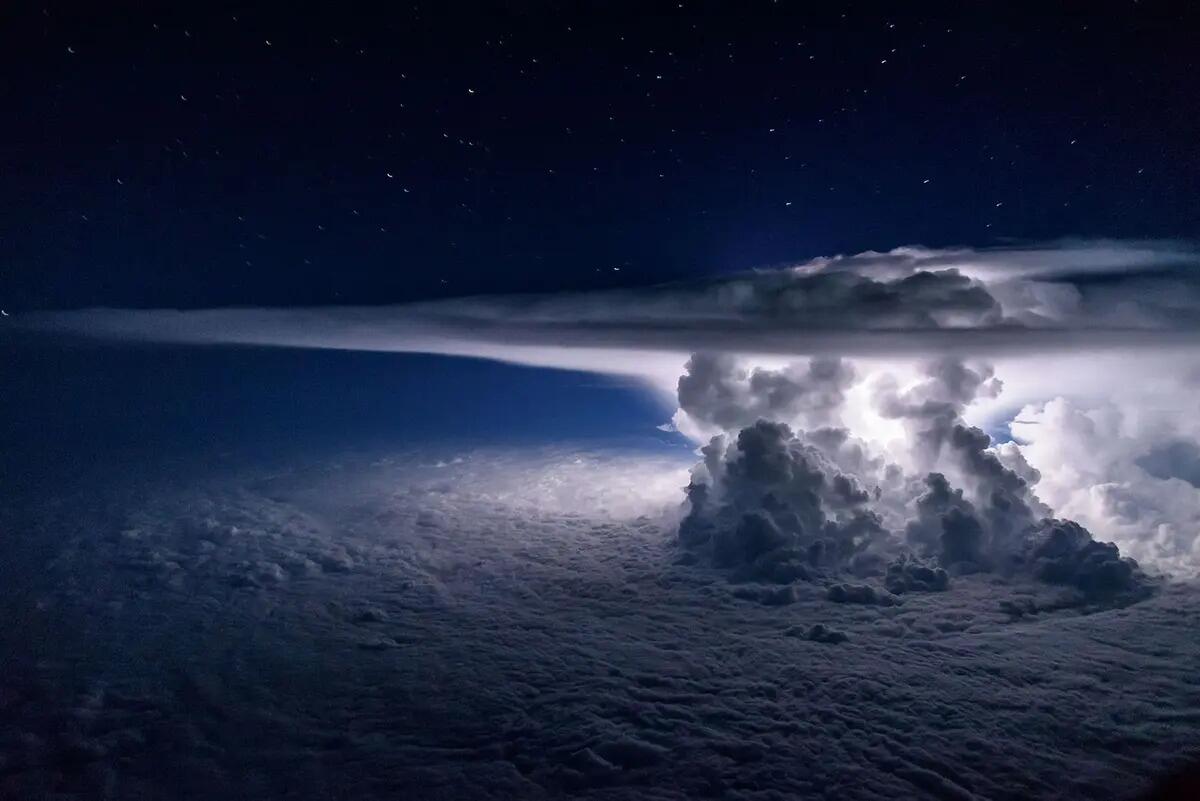
A former software systems engineer, Mr. Borja is from Ecuador and flies a Boeing 767 for a major airline in the region.
Before becoming a storm photographer, Mr. Borja was interested in photography as a hobby and used an old film camera—which he inherited from his father—before moving to a digital SLR.
“Storms always fascinated me, and I kept wondering how I could capture such beautiful and amazing phenomena,” he said. “I tried different settings and techniques until I finally came up with a way to consistently capture storms from a moving airplane.”
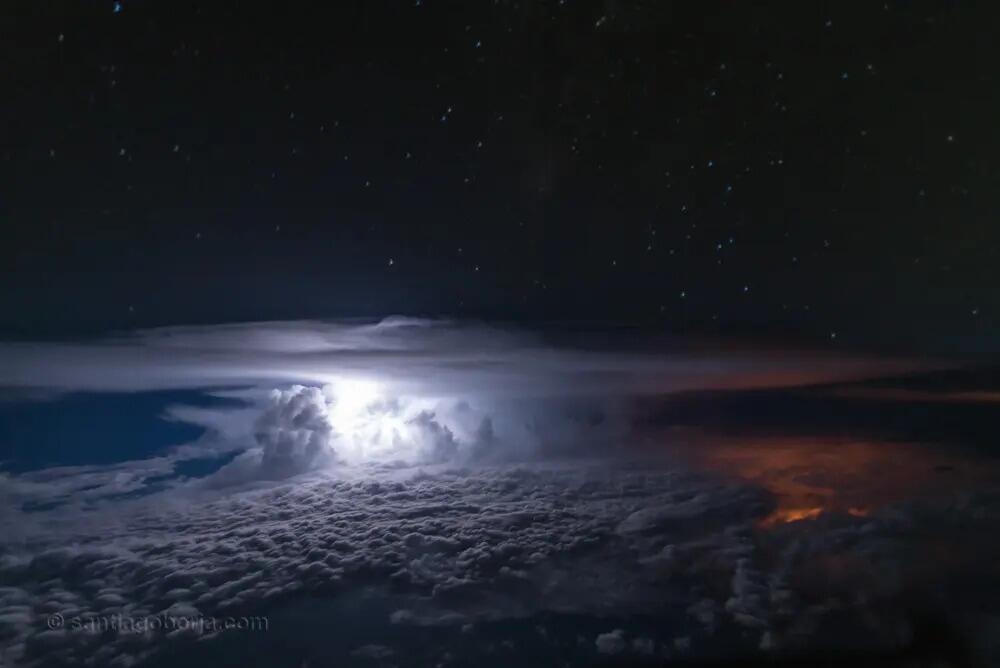
Mr. Borja, who typically flies between 30,000 and 40,000 feet above the earth, often encounters cumulonimbus storms that vary in intensity.
“I would say it is very rare when we don’t encounter storms,” he said. “Almost every flight there is some moderate storm activity in our surroundings.”

As an airline pilot, Mr. Borja is unable to modify his route, so he makes use of the various opportunities to capture a good image.
“If the airplane is too close to the storm or the cloud system, the turbulence and the clouds themselves make it impossible,” he said. “I need calm air to be able to capture these storms.”
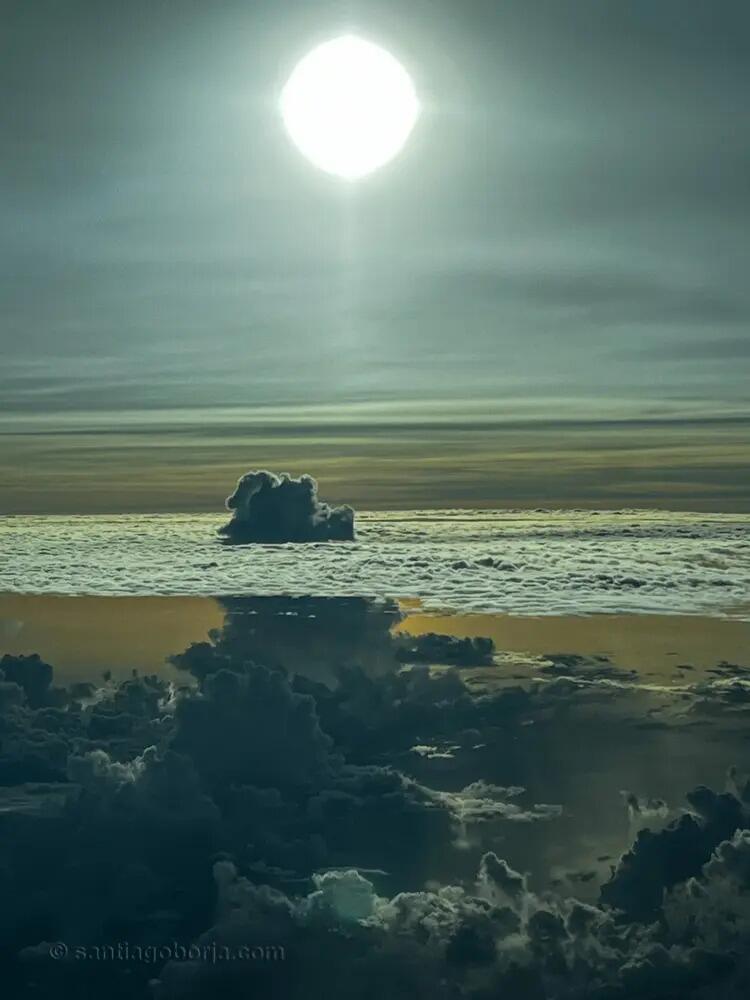
Many have wondered how Mr. Borja can fly and capture such incredible shots at the same time.
To which he replies that since he often flies transatlantic routes, the three other pilots with him take turns controlling the aircraft, leaving him four hours of rest time to sleep and take pictures.
The pilot is unable to carry a lot of photography gear with him at all times, so he almost always uses his full-frame DSLR with a 28-300 mm lens.
“For storms, I don’t really need a long lens, but this is my lens for any occasion,” he said.
His proudest accomplishment has been capturing “Pacific Storm,” a photo that was taken over the Pacific Ocean in 2004. This image was recognized by National Geographic and widely viewed by scientists worldwide.
“I ended up learning a lot about meteorology and science by talking to all the people that got interested in this image,” Mr. Borja said. This success allowed him to publish his book—“#The Storm Pilot.”
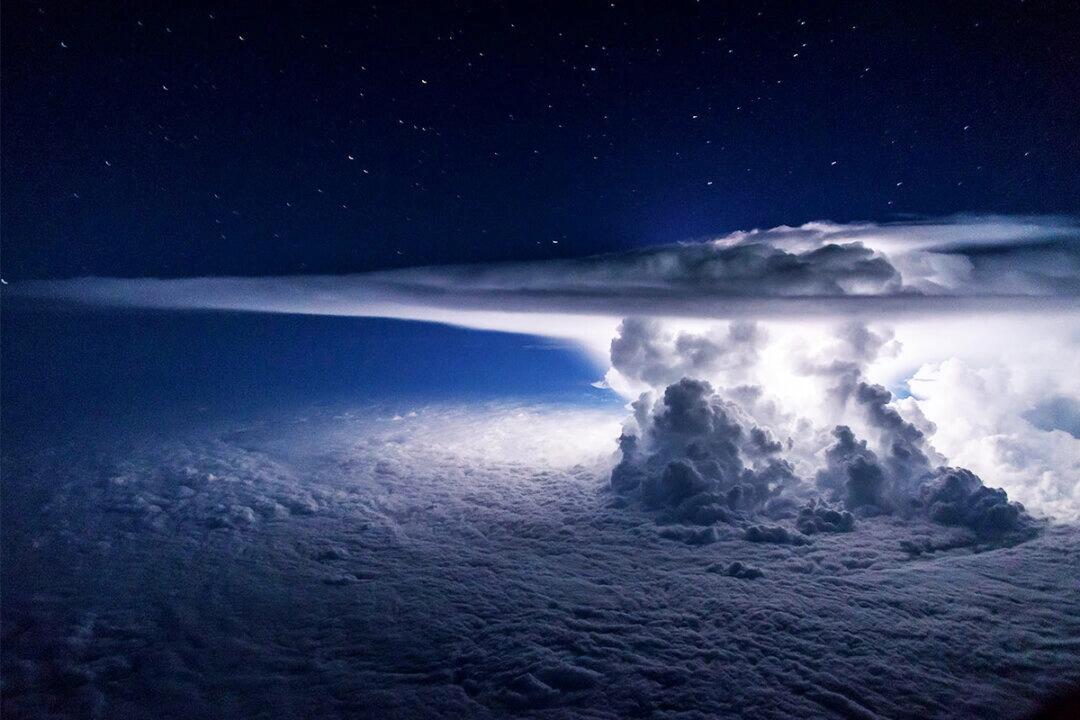
Storm photography “takes a lot of luck and a lot of trial and error,” according to Mr. Borja. Since the cockpit is bordered by high-quality glass windows that don’t produce much glare, this becomes an advantage for him. However, other variables such as light are beyond his control.
“The more light, the more difficult [it is] to capture a storm,” he said. “Sometimes with a full moon or intense city lights, the scenery is fantastic but very challenging to capture.”

The humble storm photographer has always been willing to learn more about his craft.
“I have greatly expanded my photographic knowledge and practice thanks to the people I’ve met through this journey,“ Mr. Borja said. ”I’ve had the opportunity to talk to great photographers, who have taught me some great lessons.”
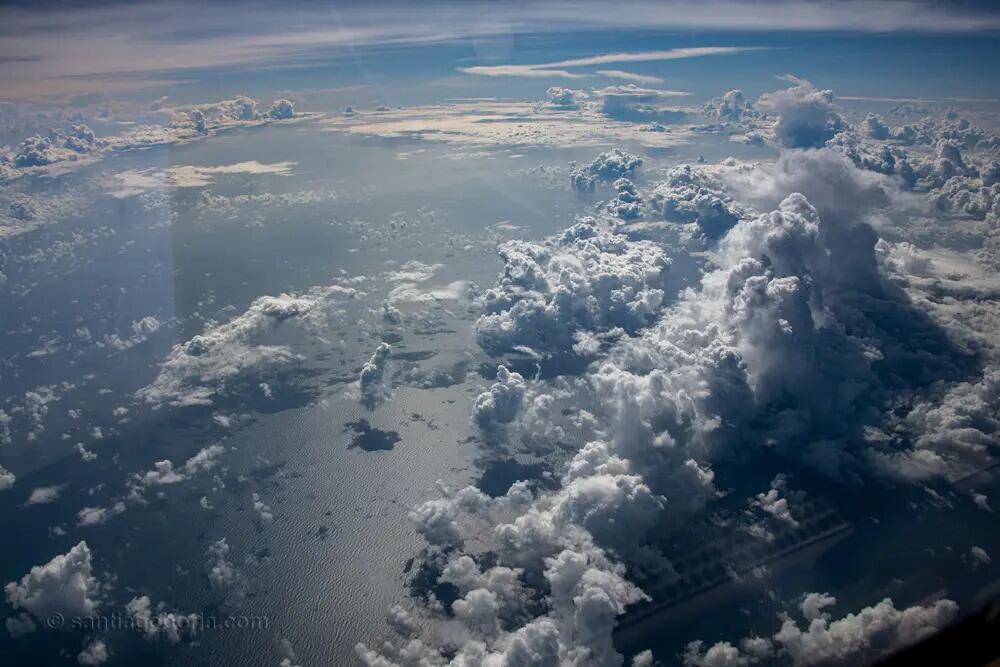
He advises up-and-coming storm photographers to learn the skills of photography well but not to take those guidelines as rigid rules, or they risk limiting their creativity.
“I was taught that you cannot take a long exposure from a moving airplane with a handheld camera, and yet, I managed to come up with a strategy to make it work,” he said.
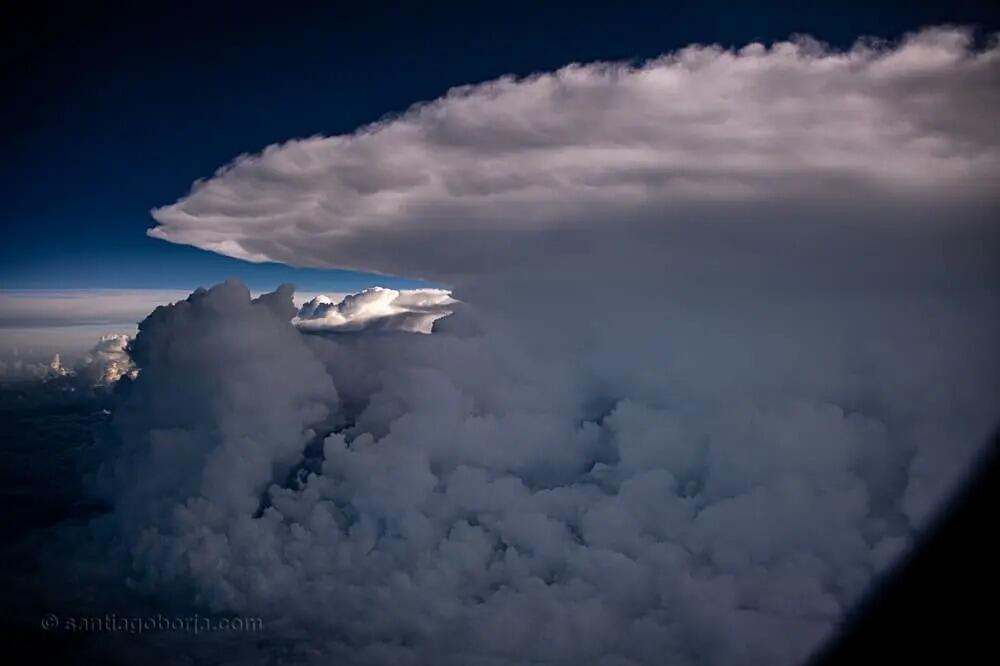
In sharing his spectacular images with the world, he wants people to enjoy nature and all it has to offer.
“We live more and more inside our human-made structures and environments,“ Mr. Borja said. ”I deeply enjoy flying and looking at our planet from a distance where we humans are imperceptible.
“Too often we forget to look up and enjoy the awesome views that nature is giving us for free.”
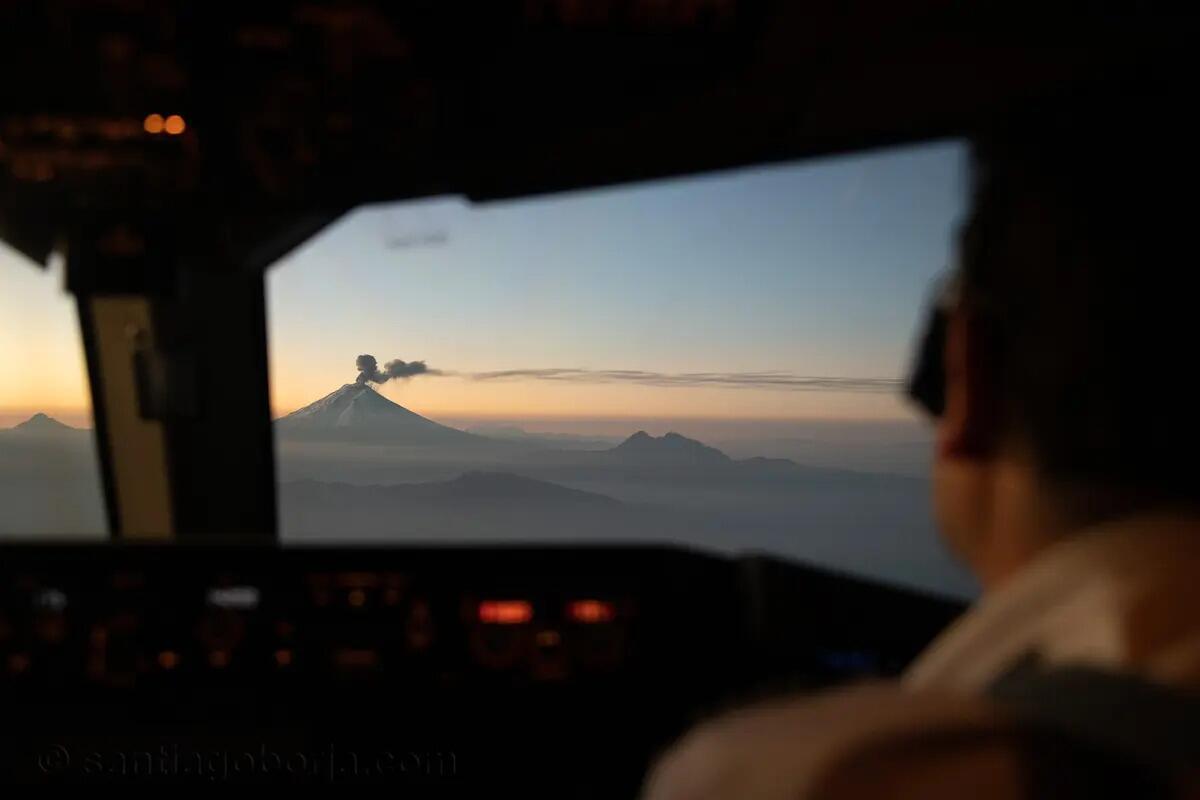

No comments:
Post a Comment